|
Tree trimming is often perceived as a costly service, and there's substantial justification behind the price tags associated with it. It's important to remember that tree trimming is a complex service that requires specific expertise, precision, and safety measures. Our homes and urban landscapes are graced by trees that provide shade, beauty, and environmental benefits, making their care a priority for property owners. Understanding the Cost Factors Involved in Professional Tree Trimming The expertise of arborists is a major factor contributing to the cost of tree trimming. These professionals spend years learning and honing their craft. Beyond their expertise, they must also invest in specialized equipment that is both expensive to purchase and maintain. Climbing gear, chainsaws, wood chippers, and stump grinders are just a few examples of the machinery that quality tree care demands. Safety Measures and Insurance: Ensuring Safe Tree Trimming Operations Safety is paramount in tree trimming operations, not just for the arborists but also for the property and its inhabitants. Safety protocols escalate the cost as they involve comprehensive training, workers' compensation insurance, and liability insurance. This coverage protects us, the employees, and the clients from potential accidents or property damage, a non-negotiable aspect of offering a professional tree service. Essentials of Tree TrimmingTree trimming is a crucial maintenance practice that ensures trees remain in optimal health and pose no risk to people or property. When we undertake tree trimming, we focus on several essential aspects to maintain tree health and aesthetics. Safety: Our top priority is to prevent harm to both individuals and workers. Trimming trees, particularly large ones, can be hazardous. We utilize proper safety gear and techniques to mitigate these dangers. Tools and Equipment: High-quality, specialized tools such as chainsaws, pole pruners, and ladders are required. These tools must be maintained and handled by trained professionals, which contributes to the cost. Expertise: Skilled arborists have a deep understanding of tree biology and are trained to identify which branches need trimming. They ensure the tree's structural integrity and health are maintained.
Cleanup: After trimming, the removal of branches and debris is necessary to leave the area tidy and safe. Investing in these essentials assures our clients that their trees are managed responsibly and professionally, justifying the expense involved in tree trimming services. Factors Influencing Tree Trimming CostsWhen it comes to tree trimming, several key factors directly influence the cost of the service. Understanding these can help homeowners and property managers anticipate expenses. Equipment and ToolsWe use a variety of high-quality tools such as chainsaws, pole saws, ladders, and safety gear. The upkeep and replacement of this equipment contribute to the overall cost. Additionally, specialized vehicles like cherry pickers or cranes may be necessary for taller trees, further increasing expenses.
Professional ExpertiseOur team consists of trained arborists with expertise in tree biology, proper trimming techniques, and safety protocols. This specialized knowledge is vital for the health of the trees and the safety of both the workers and the property.
Risk and InsuranceTree trimming can be hazardous. We must invest in insurance to protect our employees and clients from potential accidents.
Tree Size and ConditionLarger and poorly maintained trees often present greater challenges, requiring more time and resources.
Permitting and RegulationsLocal regulations could necessitate permits for tree trimming, especially for protected tree species or in historic areas. We ensure compliance with all local laws, which may include permit fees and additional labor to meet specific standards.
Cost Variations by Location When Trimming TreesIn examining the cost disparities of tree trimming across various locations, we must acknowledge how regional factors influence price. Firstly, labor costs vary considerably from one area to another due to differences in minimum wages and the cost of living. For example, tree trimming services in urban areas like New York City tend to be more expensive than in rural areas. Additionally, permit requirements can affect costs. Some municipalities require permits before any significant tree work is done, which can add to the overall expense. Travel distance also plays a role. Companies may charge more if they need to travel longer distances to provide services, impacting overall costs. Similarly, accessibility issues, such as the ease of reaching the tree, can increase costs in densely populated areas or locations with challenging terrain. We must consider the demand for services as well. In regions prone to storms or those with a high density of trees, demand can drive prices up, especially during peak seasons. Lastly, climate and tree disease prevalence are regional factors that can make tree trimming more complex and, consequently, more costly. If trees are diseased or pest-infested, they may require more specialized care, impacting the price. In summary, multiple region-specific factors collectively determine tree trimming costs, which accounts for the substantial variation seen across different locations. Understanding the Cost Factors Behind Tree Trimming ServicesWe know that professional tree trimming can seem costly, but there are valid reasons behind the pricing. The expenditure on tree trimming services primarily encompasses labor, equipment, safety measures, and insurance.
This investment in manpower, tools, and safety is critical for providing a high-quality service. Each of these elements plays a role in the cost structure of tree trimming services and contributes to the overall pricing we observe. Additional Services and Hidden CostsWhen engaging a tree trimming service, we often encounter expenses beyond the initial quote. These can arise from additional services required to complete the job or from less obvious ancillary costs. Removal and DisposalOnce a tree is trimmed, there is debris and waste that needs to be removed and disposed of properly. Disposal fees can vary, and there may be recycling regulations governing how to handle the tree material. For instance:
Emergency ServicesTree trimming in response to an emergency, such as post-storm damage, may cost more due to the need for immediate response. Factors affecting the price include:
Travel and AccessibilityThe location of the tree and ease of access can significantly affect the cost of trimming services. Considerations include:
Comparing DIY vs. Professional CostsWhen considering tree trimming, we often assess the cost difference between undertaking the project ourselves (DIY) and hiring professionals. Here is a breakdown of potential costs: DIY Costs:
Professional Costs:
Despite the initial appeal of saving money with DIY, the professional route often outweighs the potential risks and hidden costs of doing it ourselves. We gain peace of mind, efficiency, and ensure the health of our trees with a professional service. Investing in Tree Health and Property ValueProper tree trimming is crucial as it directly impacts tree health and subsequently, property value. Healthy trees contribute to the aesthetic appeal of a property, which can increase its market value. Inversely, neglected trees can become hazards, potentially leading to property damage or injury, and diminishing property value. When we invest in professional tree trimming services, we ensure that our trees have the best care for their specific species and environment. Professionals assess and execute tree trimming with precision, considering factors like:
A well-maintained tree can provide substantial returns. For example, the Council of Tree and Landscape Appraisers states that a mature tree can often have an appraised value between $1,000 and $10,000. The table below illustrates the potential Return on Investment (ROI): Investing in a tree's health through regular trimming is not just about immediate outcomes but also long-term gains. Trees become more resistant to environmental stresses, diseases, and have a greater chance of living longer. Conserving tree health also means we invest in the sustainability of our environment, ensuring that we benefit from everything trees have to offer, such as shade, cleaner air, and reduced energy costs. Frequently Asked QuestionsWhen considering the cost of professional tree trimming, we often encounter several impactful factors. Our understanding of these can help us make informed decisions about tree maintenance investments. What Factors Contribute to the High Cost of Professional Tree Trimming Services?The expense of professional tree trimming services is often attributed to specialized equipment, skilled labor, safety measures, and insurance costs. The expertise required for safely trimming trees, especially large or hazardous ones, justifies the premium pricing of these services. How Does the Size and Accessibility of a Tree Affect the Price for Its Trimming?Larger trees necessitate more time, labor, and equipment, which in turn increases the cost. Accessibility issues such as tight spaces, nearby power lines, or buildings also require additional safety measures and equipment, contributing to a higher price. Why Do Tree Trimming Costs Vary Between Different Service Providers?Costs vary due to differences in expertise, equipment quality, business overhead, and location. Some providers may also offer specialized services that can affect pricing. Furthermore, a well-established company with a stellar reputation might charge more than a less-known competitor. What Additional Expenses Might Be Included in a Tree Trimming Quote?Additional expenses in a tree trimming quote might include the removal of limbs, disposal fees, or extra services such as stump grinding. Travel costs or the need for traffic control can also add to the overall price. How Does the Health and Condition of a Tree Influence the Trimming Cost?A tree's health and condition play a significant role. Infected, diseased, or pest-infested trees may require special care, extending the time and effort needed. Additionally, dead or weak branches pose higher risks which can lead to increased costs. Can Seasonal Demand Impact the Pricing for Tree Trimming Services?Seasonal demand can indeed impact pricing. During seasons of high demand, like post-storm cleanups or spring preparations, prices may rise due to the increased workload and urgent service requests. Conversely, prices might be lower during off-peak seasons. Trimming and pruning trees are essential parts of landscape maintenance that not only enhance the aesthetic appeal of your green spaces but also promote healthy growth and reduce the risk of property damage or personal injury. However, the task is not without its risks. Each year, many people are injured due to improper handling of equipment or failure to take appropriate safety measures while trimming trees. Safety should always be our top priority when we undertake any tree trimming or pruning project. Whether we are homeowners looking to maintain our yard or professionals in the field, understanding and implementing safety practices can mean the difference between a job well done and a trip to the emergency room. We must approach the task methodically, using the right tools and protective gear to ensure our safety and the well-being of those around us. Our commitment to safety begins with planning. Before we even touch a pair of pruning shears or a chainsaw, we must assess the situation carefully. We look for potential hazards such as power lines, unstable branches, or uneven ground. Preparing the area and informing others about our work will help prevent accidents. With a clear plan in place, we can proceed confidently, knowing that we have addressed the foreseeable risks associated with tree trimming and pruning. Understanding Tree Trimming and Pruning: Essential Safety TipsTree trimming and pruning are crucial for maintaining tree health and safety. These practices involve the selective removal of parts of a tree to achieve aesthetic and health benefits. Difference Between Trimming and PruningTrimming and pruning cater to different needs within tree care. We trim trees primarily to maintain a tree's desired shape and appearance. This often involves:
On the other hand, pruning focuses on the tree's health and the safety of its surroundings by:
Benefits of Proper Tree CareProper tree care is essential for the longevity and vitality of our trees. Here are the main benefits:
Adhering to these specific practices will ensure that our trees stay healthy, look good, and remain safe for everyone to enjoy. Executing Safe Tree Trimming and Pruning is Crucial to Avoid InjuryTree trimming and pruning are essential for maintaining tree health and safety. Attention to proper techniques and equipment can prevent accidents and damage to property. Personal Safety GearFor our protection, we always use appropriate safety gear before beginning any tree trimming work. This includes:
Choosing the Right ToolsSelecting the proper tools is crucial for efficient and safe tree trimming. We use:
All tools should be sharp and in good working condition. Trimming TechniquesEffective trimming techniques help us prevent damage to the tree. We practice:
We always cut outside the branch bark ridge and collar for a clean, healthy cut. Pruning Best PracticesWhen pruning, we adhere to these best practices:
Dealing with Power LinesWorking near power lines requires extreme caution. We adhere to the following guidelines:
Disposing of Tree LimbsAfter trimming and pruning, we ensure the safe disposal of tree limbs:
Frequently Asked Questions on Safety Tips for Tree Trimming and PruningAs we approach the task of tree trimming and pruning, it's crucial to acknowledge the importance of safety. In this section, we address common concerns that may arise during these activities. What personal protective equipment (PPE) is essential for tree trimming and pruning?For our protection, we must wear the right PPE, which includes gloves, safety goggles, hard hats, and ear protection. Additionally, when working at heights or with power tools, we should also use fall protection gear and chainsaw chaps. How can one ensure safety when using ladders during tree trimming operations?We must use ladders correctly by choosing the right type and size for the job. Ladders should be placed on stable ground and at the proper angle, following the 4-to-1 rule; for every four feet of ladder height, the base should be one foot away from the tree. What are the best practices for safely disposing of tree branches and debris after pruning?We should gather and dispose of debris systematically to avoid tripping hazards. Larger branches can be cut into manageable sections, while smaller ones can be put into yard waste bags or bins. Complying with local disposal regulations is important. What precautions should be taken to avoid electrical hazards while trimming trees near power lines?When working near power lines, we keep a safe distance as recommended by the relevant electrical safety authority, usually a minimum of 10 feet. If this is unmanageable, we contact the utility company to de-energize or shield the lines. How should one assess the health and stability of a tree before beginning trimming or pruning work?We inspect the tree for signs of disease, decay, or damage. Also, we assess the structural integrity of branches and the tree's lean to plan our approach. Consulting an arborist may be necessary if the tree's condition is questionable. Can you outline a step-by-step safety procedure for conducting tree trimming and pruning?We start by planning the job, identifying potential hazards, and determining the necessary equipment. Next, we clear the work area and establish drop zones. When cutting, we use proper techniques and work from the top down to control the fall of branches. After the work, we conduct a thorough clean-up. Removing a tree from our property seems daunting, but understanding the right techniques can ensure a safe and effective removal. With the potential hazards involved, it's crucial that we approach tree removal with careful planning and respect for safety guidelines. Whether faced with a diseased, damaged tree or posing a danger to our home, the removal process requires us to make informed decisions every step of the way. As homeowners, we have a duty to not only protect our property but also to maintain the safety of our surroundings. Proper tree removal techniques help us to minimize the risk of injury and damage to our property. It's essential to assess the size and location of the tree, obtain the necessary permits, and decide whether professional assistance is needed. Furthermore, understanding the tools and methods for safe tree removal empowers us to tackle the task confidently. When we take on tree removal, we must also consider the environmental impact and the importance of responsible disposal of tree debris. By familiarizing ourselves with the latest safety standards and best practices in the industry, we can carry out tree removal responsibly and efficiently. Knowledge of these techniques is an invaluable resource for homeowners who wish to keep their property and community safe. Assessing Tree Removal NeedsIn preparing for tree removal, we must accurately assess the tree's health and understand local removal regulations. Determining Tree Health To ensure safety and accountability, the assessment of a tree’s health is the first step in our tree removal process. We inspect for several signs that indicate a tree is no longer viable:
Tree Removal Permits and Regulations Removing a tree often requires compliance with local laws and regulations. We thoroughly check the following:
Preparation for Tree RemovalBefore we start removing a tree, we must ensure we have the right tools and safety gear in place. Proper preparation mitigates risks and streamlines the removal process. Selecting the Right Tools To remove a tree safely and efficiently, we need to equip ourselves with the appropriate tools. Here's a breakdown of essential equipment:
Safety Gear and Precautions Our safety is paramount during tree removal operations. Here is the essential safety gear to use:
Tree Removal TechniquesTree removal is an intricate process that involves several key techniques to ensure the safety of both person and property. We will cover the three primary methods: Directional Felling, Sectional Dismantling, and Stump Removal Options. Each technique offers distinct advantages and is suited to different situations. Directional Felling Directional Felling is the process of cutting down a tree so that it falls in a predetermined direction. We achieve this by making precise cuts:
Sectional Dismantling In cases where there's limited space, Sectional Dismantling is our go-to method. It involves removing the tree in sections from the top down. We employ a variety of techniques:
Stump Removal Options After a tree has been removed, the stump remains. We have two main strategies for dealing with stumps:
Post-Removal ProcessAfter the tree is safely removed, our focus shifts to cleaning up debris and considering future landscaping options.
Debris Cleanup Methods Immediate Cleanup: We start by gathering and removing large pieces of wood, limbs, and foliage. We chop larger branches into smaller, more manageable pieces for efficient disposal. Wood Disposal Options:
Smaller Debris: We sweep or rake smaller twigs, leaves, and sawdust, bagging them for yard waste collection. Tree Replacement Considerations Soil Assessment: We test the remaining soil to ensure it is suitable for new plantings. Key factors to consider:
Maintaining the health and appearance of trees in our garden is crucial for both aesthetic appeal and structural integrity. Tree trimming and pruning are essential yard maintenance tasks that not only keep our garden looking manicured but also encourage healthy growth and reduce the risk of property damage from broken limbs. Understanding which branches to trim, the proper techniques to use, and the best season for pruning helps us to enhance the overall beauty and well-being of our garden. As we approach tree trimming and pruning, it’s important to have clear goals in mind. Are we aiming to shape trees for a more pleasing landscape design, or are we more concerned about removing potentially dangerous deadwood? By determining our primary objectives early on, we can make informed decisions about how to proceed with the pruning process. Different species of trees have varying needs and respond differently to pruning, so recognizing the specific requirements of our garden's flora is a key to successful tree maintenance. Our approach to tree maintenance must always prioritize the safety and health of our trees. Using the correct tools for cutting and following safety guidelines will prevent injuries to ourselves and damage to the trees. Keeping tools clean and sharp ensures clean cuts that heal quickly, reducing the risk of disease. Strategic trimming carried out at the right time of year, can promote vigorous growth and flowering, which ultimately contributes to a thriving and attractive garden. Understanding the Basics of Tree Trimming and PruningTree trimming and pruning are essential for maintaining your garden's health and aesthetics. We'll examine the distinctions between trimming and pruning, how to assess tree health, and the optimal timing for these practices. Distinguishing Between Trimming and Pruning Trimming typically refers to the cutting of shrubs and hedges for aesthetic and functional purposes. Its objective is to ensure the foliage is neat and shaped uniformly. Pruning, on the other hand, focuses on trees and plants' long-term health. It involves the selective removal of dead, diseased, or overgrown branches that can detract from a plant's overall vitality. Assessing Tree Health and Structure Before we start any trimming or pruning activity, we must assess the tree's health and structure. Look for signs of disease, such as discolored leaves, cankers, or unusual growth patterns. The tree's structure should be evaluated by identifying weak branches, crossed limbs that may rub against each other, and any competing leaders, which are multiple main branches attempting to become the dominant center stem. Identifying the Right Time of Year for Pruning The right time to prune is critical for promoting healthy growth. Here is a general guideline for the timing of pruning:
Essential Tree Trimming TechniquesIn this section, we focus on the specifics of selecting the right tools, ensuring safety during trimming, and shaping trees to enhance your garden's aesthetics. Proper Tool Selection We must choose the right tools to execute tree trimming effectively. These include:
Techniques for Safe Trimming Safety is paramount when trimming trees. Here are our specific guidelines:
We adhere to these practices to minimize risk and ensure a healthy trimming process. Shaping Trees for Aesthetics Shaping trees requires an understanding of tree biology and a vision for the desired outcome. Here are the steps we follow:
Pruning Best PracticesPruning should be approached with a focus on the specific needs of each tree. The following practices ensure the health of the tree and enhance the aesthetic appeal of your garden. Pruning Young vs. Mature Trees Young Trees
Dealing with Diseased or Dead Branches Identification
Thinning and Crown Reduction Thinning
Maintenance and AftercareAfter trimming and pruning, proper maintenance and aftercare are essential for both your tools and your trees. This ensures a healthy regrowth and longevity of your garden's aesthetics.
Caring for Your Tools
Protecting Trees Post-Pruning
Hey there, tree lovers!
Neighbor's Trees Overhanging My Property in Gastonia, North Carolina: Your Rights and Remedies12/8/2023
When we discover our neighbor's trees overhanging onto our property, it can create a unique set of challenges and questions. Situated in Gastonia, North Carolina, we are bound by specific state and local laws that govern how to handle such situations. It is crucial to understand our rights and the proper steps to take to resolve any disputes amicably and legally. Overhanging branches can pose risks to property, can become a nuisance with falling debris, and may affect our enjoyment of our property. Before taking any action, it is imperative to be informed about the legal remedies available to us and the most effective ways to communicate with our neighbors. We must approach this matter with a clear understanding of our legal entitlements and responsibilities. This includes knowing whether we can trim the branches ourselves, when to involve local authorities, or if there are any ordinances in Gastonia that pertain to such situations. Taking the appropriate action not only helps in maintaining good relations with our neighbors but also ensures that we protect the value and integrity of our property. Legal Overview of Property Rights in Gastonia, North CarolinaIn Gastonia, North Carolina, property rights are governed by a mix of state statutes and local ordinances, which we'll explore with regard to trees overhanging property lines. Understanding Property BoundariesWe must first identify the precise property boundaries as delineated by our deed or a professional survey. This is crucial, as it establishes the limit up to which we have legal rights over the land and the vegetation on it. Property boundaries are officially recorded and can be used as evidence in legal disputes. Tree Ownership LawsOwnership of a tree in North Carolina is determined by the location of its trunk. If a tree's trunk is fully on our property, we are the sole owners. However, when a tree's trunk straddles a boundary line, it is considered shared property. Different rules may apply for its maintenance and removal. Right to Trim Overhanging BranchesWe have the right to trim branches extending onto our property up to the property line, provided we do not damage the health of the neighbor's tree. This right is conditional and must be executed without trespassing onto the neighbor's property or causing unnecessary harm to the tree. Steps to Address Overhanging Trees in Gastonia, North CarolinaBefore taking any action regarding overhanging trees on your property in Gastonia, North Carolina, it's essential to understand your rights and responsibilities. Following a step-by-step process can help maintain good relations with your neighbors and ensure you're in compliance with local laws. Identify OwnershipFirst, it's crucial to accurately identify who owns the tree. Trees growing on the boundary line between properties are often jointly owned. Trees wholly on a neighbor's property but overhanging onto yours are their responsibility. Check property lines and deeds to confirm ownership. Communicate with Your NeighborOpen communication is always the best first step. Talk to your neighbor, keeping the discussion friendly and factual. Written correspondence is beneficial, so consider sending a polite letter expressing your concerns and suggesting a cooperative solution. Document the SituationDocumentation is key in case the situation escalates or causes damage. Take photographs of the trees and any existing damage. Keep a written record of all communications and attempts to resolve the situation with your neighbor. Consider Mediation OptionsWhen direct communication doesn't yield results, look into mediation. Mediation can facilitate dialogue and help both parties reach a mutually acceptable agreement. Gastonia may have local community mediation services that can assist before legal measures are considered. Trimming Practices and LimitationsUnder North Carolina law, you can trim branches overhanging your property up to the property line, but you must not damage the tree's health. Hire a professional arborist to ensure the work is done safely and appropriately. Remember that if a tree trunk is on your property, you are likely its owner and responsible for the trimming and care. Municipal Ordinances in GastoniaIn Gastonia, North Carolina, municipal ordinances govern the maintenance and preservation of trees, whether privately or publicly owned. Specifically, these ordinances address tree preservation and the required permits for trimming overhanging branches. Local Tree Preservation LawsGastonia's tree preservation laws focus on maintaining the urban canopy and protecting significant trees. Significant trees, as defined by local ordinances, are those that meet certain size and species criteria. Residents must obtain approval before removing these trees, even if they are located on private property.
It's crucial to consult the specific municipal code to determine whether a tree on your property falls into a protected category. Permit Requirements for Tree TrimmingWhen dealing with trees overhanging your property, permits might be necessary for trimming. To avoid violating any city ordinances, it's important to follow these guidelines:
If overhanging branches pose immediate danger to property or persons, emergency actions may be warranted—documentation of the threat is typically required. Liability for Damage and Nuisance Claims in the Context of Overhanging Trees in Gastonia, North CarolinaWhen trees overhang a property in Gastonia, North Carolina, issues of liability for damage and legal pathways for nuisance claims are matters property owners must understand. Determining LiabilityIn Gastonia, North Carolina, we identify the owner of the tree as potentially liable for any damages caused by overhanging branches or roots. Property owners are responsible for maintaining their trees, and failure to do so may result in liability if any damage occurs to neighboring properties. It is pertinent to discern the origin of the tree—whether the trunk stands wholly on the neighbor's property, which typically denotes ownership. Filing a Damage ClaimTo file a damage claim due to overhanging trees, we advise documenting the damage and contacting the tree owner to address the problem. Documentation should include:
If a resolution is not reached, we may proceed with a formal complaint through the local civil court system or explore alternative dispute resolutions, such as mediation, to seek compensation for damages realpathed. Engaging Professional Services in Gastonia, North Carolina for Overhanging TreesWhen dealing with overhanging trees from a neighbor's property in Gastonia, North Carolina, selecting the right professional services is crucial. Our focus is on hiring certified tree service professionals for proper tree management and seeking legal representation if the situation requires a legal resolution. Hiring a Tree Service ProfessionalWe must ensure the tree service professional we hire is licensed and insured to operate in Gastonia. It is also wise to verify their credentials and experience with similar issues. Our checklist for hiring includes:
Legal RepresentationIf negotiation with our neighbor fails and we need to enforce our rights legally regarding overhanging tree limbs, securing a lawyer experienced in property and tree law in North Carolina is essential. Key steps include:
Preventative Measures and Neighborly RelationsWhen trees from a neighbor's yard overhang onto someone's property in Gastonia, North Carolina, taking preventative measures can save both parties from potential conflicts. Promoting goodwill with the neighbors can also ensure a harmonious environment. These steps are crucial to maintaining property and relationships. Establishing a Preventive Maintenance ScheduleWe should regularly inspect our trees that may affect neighboring properties.
By outlining a clear maintenance schedule, we can ensure that any overhanging branches do not become a concern. By keeping to a schedule, we also demonstrate our commitment to maintaining our property and preventing any potential damage to our neighbors' properties. Promoting Goodwill with NeighborsOur interactions with neighbors should be approached with diplomacy and respect. Steps to Promote Goodwill:
A consistent dialogue allows us to address issues before they escalate and ensures that we live in a cooperative neighborhood. Through these actions, we foster a positive community atmosphere where everyone feels valued and respected. Frequently Asked QuestionsWhen dealing with disputes or concerns about trees that straddle the line between properties, it's essential to understand our specific legal rights and responsibilities. We'll address common inquiries about overhanging branches, property damage, and the legalities of tree maintenance in Gastonia, North Carolina. Who is responsible for maintaining trees on a property line in North Carolina?In North Carolina, the responsibility for maintaining trees on a property line typically lies with the owner of the land where the tree trunk stands. If a tree trunk straddles a property line, both property owners may share the responsibility for maintenance. How does North Carolina law address liability when a neighbor's tree falls on my property?If our neighbor's tree falls onto our property, the neighbor may only be liable if they were negligent in maintaining the tree. If the tree was otherwise healthy and fell due to natural events like a storm, our neighbor is generally not responsible. What are my rights regarding cutting overhanging tree branches from my neighbor's tree in Gastonia, NC?We are generally allowed to trim branches of a neighbor's tree that overhang onto our property up to the property line. However, we must not damage the overall health or stability of the tree. Under North Carolina law, can I dispose of branches from my neighbor's tree that fall onto my property?Yes, we can usually dispose of branches that fall onto our property from a neighbor's tree. It's our responsibility to clean up the debris unless we have an agreement stating otherwise. What are the legal requirements for building close to property lines in Gastonia, North Carolina?Gastonia, NC has specific zoning laws that dictate the legal requirements for building near property lines, often referred to as setback requirements. It's best to consult the local zoning ordinance or municipal planning department for precise information. What steps should I take if my property is damaged by my neighbor's tree in North Carolina?If our property is damaged by a neighbor’s tree, we should document the damage, notify the neighbor in writing, and consult with an attorney to understand our legal options for seeking reimbursement for the damage. Tree trimming is the practice of selectively cutting parts of a tree to achieve specific aesthetic or health-related goals. The process may involve removing branches that are dead, diseased, or overgrown as well as shaping the tree for design purposes. We typically undertake tree trimming to clear away branches that may pose a risk to property or people, to reduce the chance of disease spread, to encourage more fruitful growth, or simply to improve the tree's overall appearance. Each tree species may require a unique approach to trimming, as the growth patterns and structural integrity vary widely. Our methods must also consider the season and reasons for trimming to ensure the best outcomes for the tree's health and the surrounding environment. Well-executed tree trimming can extend the life of trees and enhance the beauty and safety of our landscapes. Understanding the Tree Trimming Process and Its ImportanceTree trimming is a critical maintenance task that ensures the healthy growth of trees, guarantees public safety, and improves visual aesthetics of landscapes. Promoting Tree HealthBy removing dead or diseased branches, we prevent the spread of decay and diseases within the tree. Regular trimming also allows for better air circulation and sunlight exposure, which are essential for the tree’s growth. This targeted cutting back encourages the development of strong, healthy new growth.
Ensuring SafetyTrimming trees is a vital practice to ensure safety in both public spaces and private properties. Weak or broken branches pose a risk as they can fall and cause injury or property damage. We regularly assess and manage tree limbs to minimize hazards, especially during severe weather conditions.
Enhancing Aesthetic AppealProperly maintained trees significantly enhance the aesthetic appeal of an area. We shape trees to maintain a pleasing appearance and complement landscape design. Not only does this boost curb appeal, but it can also increase property value.
Understanding Tree TrimmingIn tree care, trimming is essential for maintaining a tree's health, ensuring safety, and enhancing aesthetic appeal. Basic ConceptsTree trimming involves strategically cutting certain branches and limbs to achieve specific objectives. We perform this practice carefully to avoid unnecessary harm to the tree. The primary goals include removing damaged limbs, influencing growth patterns, and reducing potential risks to property or people. Tools and Techniques
Objectives
Types of Tree TrimmingDifferent trimming methods serve various purposes, ranging from maintaining a tree's health to managing its size and shape. Common Trimming Types
Using the right technique is crucial for promoting a tree's healthy growth and longevity. We understand the unique requirements of each tree species and condition. Our approach to tree trimming combines knowledge, precision, and a commitment to the well-being of the tree and its surrounding environment. Best Practices in Tree TrimmingTo ensure the health and safety of trees, we follow a set of best practices during trimming operations. These practices help maintain the tree’s structural integrity and aesthetic appeal while minimizing potential harm. Assessing the Tree ConditionWe begin by conducting a thorough assessment of the tree's health, structure, and growth patterns. This includes checking for dead or diseased limbs, signs of pests, and environmental stress factors. Evaluating the tree's condition allows us to make informed decisions about which branches need trimming and the extent of the necessary cuts.
Selecting the Right ToolsThe selection of appropriate tools is critical to our trimming process. We use sharp, clean tools to ensure precise cuts that minimize damage to the tree. Our toolkit typically includes hand pruners, loppers, saws, and, for larger trees, chainsaws. Each tool serves a specific purpose, depending on the size of the branches we are cutting. For smaller branches (<½ inch): Use hand pruners Timing of Trimming OperationsWe determine the optimal time for tree trimming based on the species, health, and the purpose of trimming. Generally, the dormant season — late fall to early spring — is the best time for most trees, as it minimizes sap loss and stress. However, there are exceptions, such as trimming flowering trees right after they bloom to avoid cutting off the next year's buds.
By adhering to these best practices, we help ensure that our tree trimming operations are effective and beneficial to the trees' long-term well-being. Tree Trimming TechniquesBefore we examine specific tree trimming techniques, it is crucial to understand that each method serves a distinct purpose, ranging from enhancing tree health to ensuring safety and aesthetic appeal. Crown ThinningCrown thinning is a selective process where we remove specific branches to reduce the density of the tree's crown without altering its overall size or shape. This technique:
Crown RaisingWhen performing crown raising, we remove the lower branches of the tree to provide clearance for vehicles, pedestrians, or to improve visibility. This method ensures:
Crown ReductionCrown reduction involves reducing the height and/or spread of the tree by pruning back to a lateral branch. We do this to:
DeadwoodingDeadwooding is the removal of dead, diseased, or broken branches to:
Environmental Impact of Tree TrimmingTree trimming is a common maintenance practice that can have complex consequences for local ecosystems, including wildlife and the health of the trees themselves. Our approach to trimming and the timing of these activities are crucial factors in mitigating negative effects. Effects on WildlifeTree trimming can disturb or destroy habitats for various species. Birds, for example, rely on trees for nesting and as sources of food. Nests can be inadvertently damaged during the process, especially if trimming occurs during breeding seasons. To lessen the impact, we schedule trimming outside nesting periods and perform habitat assessments before starting.
Tree Trimming and Ecosystem HealthThe health of ecosystems is tightly linked to the state of its trees. Proper trimming, which removes only dead or diseased limbs, can improve a tree's health and prevent the spread of pathogens.
However, excessive trimming can reduce leaf canopy, which is vital for photosynthesis and, as a result, the overall health of the tree. Reduced foliage can also affect the microclimate and soil conditions underneath. We employ techniques to trim minimally and responsibly to support ecosystem health.
Legal and Ethical Considerations in Tree TrimmingIn tree trimming, it is crucial to be aware of the legal requirements and uphold professional ethics. We must ensure compliance with local ordinances and maintain industry standards to deliver responsible services. Local Regulations and PermitsLocal laws can be quite specific about when and how trees can be trimmed or removed. Permit requirements vary from one jurisdiction to another. These regulations may dictate:
Professional Standards and CertificationAdhering to professional standards is not only ethical but also a mark of quality service. Certification with recognized authorities, such as the International Society of Arboriculture (ISA), reflects our competence. As certified arborists, we follow guidelines to:
Key elements of our professional practice include:
Advanced Tree Trimming TopicsOur understanding of tree trimming extends beyond just the basics; it includes advanced techniques and innovative equipment designed to enhance the health and aesthetics of trees. We also tailor our methods to suit specialized situations, ensuring the best outcomes for both the trees and their surrounding environments. Innovations in Tree TrimmingRecent advancements in tree trimming have introduced a range of new tools and techniques. These innovations often aim to increase efficiency and safety while reducing damage to the trees:
Tree Trimming for Specialized SituationsCertain scenarios call for specialized tree trimming approaches:
In sensitive ecological areas, we implement low-impact trimming methods to protect the habitat and other species that rely on the tree. Frequently Asked QuestionsIn this section, we address common inquiries about tree trimming, providing clear and precise information to help understand this important gardening practice. What does 'trim your tree' imply?'Trim your tree' means to cut away overgrown or unwanted branches to improve the tree's shape and promote healthier growth. This process can also remove potential hazards such as dead limbs. How does tree trimming differ from tree pruning?While tree trimming is focused on maintaining a tree's desired shape and appearance, tree pruning is more concerned with the tree's health and structure, removing dead or diseased branches to prevent the spread of decay. Why is tree trimming necessary?Tree trimming is necessary to ensure the health of the tree, enhance its appearance, and prevent damage to property or injury by removing overgrown or dangerous branches. What are the rules and regulations surrounding tree trimming?The rules and regulations surrounding tree trimming vary by location but generally require property owners to obtain a permit before trimming trees, especially those on public land or protected species. Can you describe a tree trimming party and its traditions?A tree trimming party is typically a social event where friends or neighbors gather to help trim a tree, often in preparation for festive decorating. Traditionally, it involves the communal effort of shaping the tree while enjoying each other's company. What are the key aspects of tree pruning in the context of decision tree algorithms?In the context of decision tree algorithms, tree pruning involves reducing the size of the tree by removing sections of the tree that provide little power to classify instances. This simplifies the model to prevent overfitting and improve predictive performance. Removing small trees and exposed roots is more than just a landscaping task; it's an essential practice to ensure the safety and aesthetic appeal of any property. Overgrown trees and protruding roots can pose various challenges, from being a tripping hazard to causing foundational damage. This guide delves deep into the methods, tools, and precautions necessary for effective tree and root removal. The Importance of Removing Small Trees & Exposed RootsTrees are a beautiful addition to any landscape, providing shade, beauty, and increasing property value. However, not all trees are beneficial. Small trees, if left unchecked, can grow into larger problems. Their roots can spread, causing sidewalks to crack, plumbing issues, and even structural damage to buildings. Moreover, there are several things that could be improved about trees. Some believe all trees are beneficial, while others think removing them is always the best option. One can refer to the article "Tree Myths Debunked" to get a clearer picture. Preparing for Small Tree RemovalBefore embarking on the removal process, assessing the area is crucial. This involves checking the tree's health, proximity to structures, and potential obstacles that might hinder removal. Safety is paramount. Using protective gear, such as gloves or safety goggles, and even a hard hat, can prevent injuries. It's also essential to inform neighbours and ensure the surrounding area is clear of people, especially children and pets. Tools and Equipment Needed for Small Tree RemovalThe right tools make the tree removal process efficient and safe. Chainsaws are ideal for cutting down the tree while pruning shears and loppers are perfect for smaller branches. For those who wish to remove the stump, a stump grinder is invaluable. It's a machine that grinds the tree stump down below ground level, ensuring that the area can be used for other purposes, like planting new trees or setting up a garden. Chemical treatments are another option, especially for those who don't have access to heavy machinery. These chemicals speed up the decomposition of the stump but should be used with caution due to their environmental impact. Step 1: Assessing the Tree and Roots Before making any cuts, it's essential to have a strategy. This involves assessing the tree's size, health, and position. For trees leaning in one direction, it's crucial to determine the best angle for cutting to ensure it falls safely. Also, understanding the root system can give insights into how deep and widespread the roots are, which is vital information for the removal process. Step 2: Choosing the Right Removal Method There are several methods to remove small trees, each with its advantages and challenges:
Step 3: Removing Exposed Roots Exposed roots can be both an eyesore and a hazard. Over time, as trees grow, their roots can become exposed due to soil erosion or other factors. These roots can pose tripping hazards, especially in areas with foot traffic. Removing them involves a process similar to tree removal. First, the area around the root is dug up to expose it fully. Once exposed, the root can be cut and removed. It's essential to ensure the removal doesn't harm the tree or the surrounding environment. Environmental Benefits of Proper Tree and Root ManagementManaging trees and their roots isn't just about aesthetics or safety; it's also about the environment. Properly maintained trees can provide habitats for wildlife, reduce carbon dioxide in the atmosphere, and even help in temperature regulation. On the other hand, rotting stumps and overgrown roots can attract pests and become breeding grounds for diseases. By managing trees and roots effectively, we contribute to a healthier environment. DIY vs. Hiring Professional AssistanceThe decision to remove trees and roots on your own or hire professionals depends on several factors, including the tree's size, location, and your expertise. While DIY might seem cost-effective, it comes with risks. Improper cuts can lead to tree diseases or regrowth. There's also the danger of injury. Hiring professionals like Gastonia Tree Service ensures safety, expertise, and long-term tree health. Professionals have the tools, knowledge, and experience to handle any tree or root situation. ConclusionThe process of removing small trees and exposed roots is not just a mere task—it's a commitment to enhancing our surroundings' safety, beauty, and health. This endeavour requires meticulous preparation, the utilization of the right tools, and a deep understanding of the intricacies involved. While the allure of a DIY approach might be tempting for some, the complexities and potential risks associated with tree and root removal underscore the value of expertise. Whether you opt to undertake this challenge yourself or enlist the help of professionals, the primary focus should always be on safety, preserving the environment, and ensuring the well-being of the landscape. Trees play a pivotal role in our ecosystem, and their proper management is paramount. By addressing issues like overgrown trees and exposed roots proactively, we pave the way for a landscape that is not only visually appealing but also safe and in harmony with nature. FAQs (Frequently Asked Questions)
Tree Trimming Cost Gastonia North Carolina: Insights on Pricing and Factors Affecting Rates10/12/2023
Maintaining the health and aesthetics of trees on your property in Gastonia, North Carolina requires an understanding of the costs associated with tree trimming services. We consider tree trimming a crucial maintenance activity that not only ensures the safety of your property and community but also contributes to the overall well-being of the trees. Assessing Tree Trimming Services and Pricing in Gastonia, North CarolinaWe recognize that homeowners and property managers are often concerned about the budget when it comes to landscaping services. As such, it's important to be informed about what to expect financially before engaging in tree trimming endeavors. In Gastonia, the cost for these services is influenced by the tree's accessibility, its health, and any additional services like debris removal or emergency work that may be necessary. Our goal is to provide you with a comprehensive understanding of potential expenses so you can plan accordingly and invest in the care of your trees without encountering any unexpected costs. Understanding Tree Trimming Costs in GastoniaWhen considering tree trimming services in Gastonia, North Carolina, we must examine several factors that contribute to the cost. The size of the tree is a primary determinant, with larger trees generally incurring higher expenses due to the additional labor and equipment needed.
Type of Tree Service Frequency Additional Services
Accessibility and the tree's condition also play crucial roles. Difficult-to-reach trees or those requiring extra safety measures can increase the overall expense. Local permits or special requirements in Gastonia can also influence the final cost. It's always prudent to inquire with the service provider if these factors apply. We recommend getting multiple quotes from different service providers for a comprehensive view of the costs involved. It’s wise to ensure that the chosen company is licensed and insured to perform tree trimming services in Gastonia. Factors Affecting Tree Trimming Costs in Gastonia, North CarolinaWhen considering tree trimming in Gastonia, North Carolina, we find several factors that influence the final cost. Key elements include the tree's size and condition, its species and accessibility, and the complexity of the job as well as the equipment required. Tree Size and ConditionTree size is often the primary determinant in trimming costs. Larger trees require more labor and time, which translates to higher costs. For example:
The condition of the tree also affects pricing. Trees that are diseased or dead may require additional care to trim without causing further damage or posing a safety risk. Tree Species and AccessibilityCertain tree species have unique growth patterns or wood density, making them more challenging to trim and potentially increasing the cost. For instance, a pine tree might be easier and thus less costly to trim compared to a sturdy oak. Accessibility is also crucial:
Job Complexity and Equipment RequiredLastly, the complexity of the job matters. Trimming that involves precise cuts or the maintenance of a specific tree shape demands skilled labor, affecting the price. Also, the equipment required—such as cranes for very tall trees—can add to the cost. Consider:
By understanding these factors, we ensure that our clients in Gastonia, North Carolina, are well-informed about the potential costs associated with tree trimming services. Average Price Range for Tree Trimming in GastoniaIn Gastonia, North Carolina, the cost to trim trees varies widely depending on numerous factors such as the size of the tree, its location, the complexity of the branches, and the type of tree service required. For a basic trim on a small tree under 30 feet, homeowners can expect to pay between $75 to $150. This often includes light cutting to maintain the shape and health of the tree. Medium-sized trees, typically ranging from 30 to 60 feet, may cost between $150 to $300. The work here might involve cutting larger branches and more extensive shaping efforts. Owners of larger trees, those reaching higher than 60 feet, could see prices that generally range from $300 to $600 or even higher. This price reflects the increased time, specialized equipment, and potential risk involved. Additional Services:
Note:
It's important to consult with local tree service providers in Gastonia to receive more specific estimates. Our advice is to request multiple quotes to ensure competitive pricing and confirm that the company is licensed and insured. How to Secure a Tree Trimming Estimate in GastoniaWhen looking for a tree trimming quote in Gastonia, North Carolina, we recommend taking the following steps to ensure an accurate and fair estimate:
By following these steps, we can confidently secure a reliable tree trimming quote that meets our needs and budget in Gastonia. When to Trim Trees in Gastonia, North CarolinaIn Gastonia, North Carolina, tree trimming timing is crucial to maintaining tree health and safety. We'll explore the optimal seasons for this maintenance as well as necessary actions during emergency scenarios. Best Seasons for Tree TrimmingLate Winter to Early Spring is generally the ideal time for tree trimming in Gastonia. During this period, trees are dormant, which minimizes stress and allows for vigorous growth in the spring. Specifically, February to March is recommended as trees have yet to start their new growth cycles.
Emergency Tree Trimming ScenariosTree trimming outside the best seasons may be necessary in emergency situations. These include:
Reacting swiftly to these scenarios helps preserve the tree's structure and safety of the surrounding area. Choosing a Tree Trimming Service in Gastonia, North CarolinaWhen looking for a tree trimming service in Gastonia, it's crucial to consider several factors that ensure you hire a reliable and professional team. Here's how we suggest navigating your options:
By following these tips, we believe you can find a competent tree trimming service that meets your needs in Gastonia, NC. Legal Considerations for Tree Trimming in Gastonia, North CarolinaIn Gastonia, North Carolina, we must be attentive to various legal considerations when engaging in tree trimming activities. Property Lines: Ensure the tree is within your property boundaries. If it encroaches on a neighbor's property, their consent is essential. Tree Ownership: The ownership of the tree dictates who has the right to trim or alter it. Trees situated on public property or in common areas typically require permission from the city or homeowners' association. Permits: We may need to secure a permit for trimming a tree, particularly if it's of a certain size or a protected species. Gastonia’s local government has regulations protecting certain trees, which can be verified on the official city website or by contacting city officials. Protected Trees: Some trees may be under special protection due to their age, species, or historical significance, and these cannot be trimmed without prior approval from relevant authorities. Utility Lines: When trimming trees near power lines or other utilities, we must contact the utility company to avoid accidents or service disruptions. Only certified professionals should perform such work. Before proceeding with any tree trimming, we advise consulting with the appropriate municipal departments to avoid legal complications and ensure compliance with all local ordinances. How to Save Money on Tree Trimming in Gastonia, North CarolinaWhen looking to save on tree trimming in Gastonia, scheduling multiple services at once can often lead to discounts. If neighbors share the same need, group deals with a tree service provider can be negotiated. Providers may offer lower rates for multiple trees or when combining services like trimming and removal. Regular maintenance is cost-effective in the long run. By keeping trees in good condition, we reduce the risk of large, more expensive problems. Trimming trees during the dormant season can also be less expensive, as demand for services is usually lower. Research and compare quotes from various local tree trimming services. Look for experienced and insured professionals, but also, don’t forget to check for seasonal offers or discounts for new customers. Utilize the city's public assistance programs if available. Some municipalities offer aid for tree care if it impacts public areas or power lines. DIY small tasks such as light pruning can also lower costs. However, always leave large or dangerous work to the experts, since improper trimming can lead to further costs and safety hazards. Lastly, ensure to get a clear, itemized estimate before any work begins. This will provide an understanding of what we’re paying for and can help to identify any potential savings. Preparing Your Property for Tree Trimming in Gastonia, North CarolinaBefore scheduling a tree trimming service, it is essential to prepare your property adequately to ensure the process is smooth and safe. We will outline the necessary steps in this brief guide. Step 1: Access Evaluation
Step 2: Remove Obstacles
Step 3: Safety Measures
Step 4: Vehicle Relocation
Step 5: Discuss With Professional
Step 6: Protect Fragile Landscaping
We must prepare our property for tree trimming to protect our assets, ensure the safety of workers, and prevent any delays. Take the time to follow these steps for an efficient and successful tree trimming experience. Frequently Asked QuestionsIn the following section, we'll address common queries regarding tree trimming and removal costs in Gastonia, NC, alongside legal considerations. How Much Does Professional Tree Trimming Typically Cost in Gastonia, NC?Professional tree trimming in Gastonia, NC, can range from $200 to $800 depending on the size and condition of the tree. Smaller trees typically cost less, while larger trees can necessitate a higher fee due to the extra labor and equipment needed. What Factors Influence the Cost of Tree Trimming Services in Gastonia?Several factors impact the cost of tree trimming services in Gastonia, including the tree's size, health, and accessibility. Additional considerations such as the presence of power lines or other hazards, the need for specialized equipment, and whether debris needs to be removed also affect the price. What Is the Average Cost for Tree Removal Services in North Carolina?The average cost for tree removal services in North Carolina typically ranges from $400 to $2,000. Prices vary widely depending on the tree size, location, and complexity of the job. Is There a Difference in Cost for Tree Trimming During Different Times of the Year in Gastonia?We may see seasonal price variation for tree trimming in Gastonia. During dormant seasons, costs may be lower as the demand for services decreases, while emergency services following storms or during growing seasons could be higher due to increased demand. What Are the Legal Requirements for Tree Removal in North Carolina?In North Carolina, permits may be required to remove trees within city limits, especially for historic or landmark trees. It is important to consult local ordinances in Gastonia, as they can vary and may include specific requirements for property owners. How Can I Estimate the Cost of Large Tree Removal in Gastonia?To estimate the cost of large tree removal in Gastonia, consider factors such as the tree's height, diameter, and condition, as well as the complexity of its surroundings. It is advisable to obtain quotes from several professional tree removal services to get an accurate estimate. Trees, often referred to as the lungs of our planet, play a pivotal role in our environment. They provide shade, produce oxygen, and are essential habitats for countless species. Yet, despite their significance, there's a surprising amount of misinformation floating around about these majestic beings. From old wives' tales to misconceptions passed down through generations, myths about trees are as abundant as the leaves in a forest. In this blog post, we aim to shed light on some of these myths, ensuring that our readers have accurate and practical knowledge to care for and appreciate trees in the best possible way. Myth #1: Trees Can Heal Themselves No Matter What:At first glance, trees might seem like invincible giants. After all, they withstand storms, endure changing seasons, and some even live for thousands of years. This resilience has led many to believe that trees can recover from any injury or ailment on their own. While it's true that trees have remarkable self-healing mechanisms—like the ability to seal off damaged areas with a special tissue called callus—it's essential to understand their limits. For minor injuries, such as small cuts or scrapes, a tree can often recover without intervention. However, when faced with larger wounds, severe infestations, or diseases, a tree's natural defenses might not be enough. For instance, a significant bark injury can expose the tree to pathogens, leading to decay. Similarly, certain pests and diseases can overwhelm a tree's defenses, causing long-term damage or even death. In such cases, intervention, whether it's proper pruning, treatment, or even seeking advice from a tree professional, can make all the difference. It's crucial to remember that while trees are resilient, they're not invincible. Proper care and timely attention can ensure they remain healthy and continue to grace our landscapes for years to come. Myth #2: All Trees Need Regular Pruning:Pruning is often seen as a haircut for trees—a regular trim to keep them looking their best. But is it always necessary? The truth is, not all trees require the same level of attention when it comes to pruning. In nature, trees grow and shed branches without any human intervention, finding their own balance. However, in urban and suburban settings, strategic pruning can be beneficial for a tree's health, aesthetics, and safety. For young trees, formative pruning can help establish a strong structure, reducing potential issues as the tree matures. For older trees, removing dead or diseased branches can prevent the spread of decay and reduce the risk of falling limbs. But over-pruning, or "tree topping," can be detrimental, leaving trees vulnerable to disease and stunting their growth. The key is understanding the specific needs of each tree species and individual tree. For instance, flowering trees might be pruned to enhance their bloom, while fruit trees could be pruned to increase yield. It's always a good idea to consult with an arborist or tree care professional before making significant cuts, ensuring that your tree remains healthy and vibrant for years to come. Myth #3: Trees Can Grow Anywhere As Long As They Have Soil:It's tempting to think that with a bit of soil, any tree can thrive anywhere. After all, trees are the ultimate symbols of endurance and adaptability. However, the reality is a bit more nuanced. Just as fish have preferred water conditions and birds have favored habitats, trees have specific environmental preferences that determine their health and growth. Soil quality is just the tip of the iceberg. Factors like soil pH, drainage, and nutrient content can significantly impact a tree's ability to thrive. Some trees prefer acidic soils, while others flourish in alkaline conditions. Additionally, the depth and compactness of the soil can affect root growth and water absorption. Beyond soil, other factors come into play. Light exposure, temperature, humidity, and even altitude can determine whether a tree will flourish or flounder. For example, a palm tree, symbolic of sunny beaches, would struggle in a cold mountainous region, while a pine tree might find the tropics inhospitable. When choosing a tree for planting, it's essential to research its natural habitat and requirements. Local nurseries or tree care professionals can provide valuable insights, ensuring that the tree you plant has the best chance to grow strong and healthy in its new home. Myth #4: You Don't Need Professionals for Tree Care:The DIY spirit is commendable, especially in an age where information is just a click away. Many homeowners believe that with a few online tutorials and some determination, they can handle tree care on their own. While it's true that minor tasks like light pruning or mulching can be managed by most, the complexities of tree care often go beyond what meets the eye. Trees, like any living organism, have specific needs and vulnerabilities. Incorrect pruning can not only alter a tree's aesthetics but can also expose it to diseases or structural weaknesses. Diagnosing tree diseases or pest infestations isn't always straightforward, and improper treatment can exacerbate the problem. Moreover, tasks like tree removal or heavy pruning can pose significant safety risks, especially without the right equipment or expertise. Professional arborists and tree care specialists undergo extensive training and certification. They understand the intricacies of different tree species, are updated on the latest care techniques, and have the necessary tools to handle tasks safely and efficiently. While it might seem cost-effective to handle tree care independently, the long-term health of your trees and personal safety often justify seeking professional assistance. Myth #5: Trees Don't Need Water Once They're Established:There's a common belief that once trees have settled into their environment—usually a few years after planting—they're self-sufficient, drawing all the water they need from the ground. While mature trees indeed have more extensive root systems capable of sourcing water from deeper underground, this doesn't mean they're immune to water stress. All trees, regardless of age, can suffer from drought conditions. Extended periods without adequate water can lead to a range of issues, from leaf drop and reduced growth to increased vulnerability to diseases and pests. While it's true that established trees don't need as frequent watering as newly planted ones, they still benefit from occasional deep watering, especially during dry spells. The key is to monitor the soil moisture levels. If the ground around the tree feels dry several inches below the surface, it's a good indication that the tree could use some supplemental watering. Remember, a well-hydrated tree is not only more resilient but also contributes more effectively to the ecosystem, providing shade, habitat, and cleaner air. Myth #6: Planting Trees Close to Buildings is Always Safe:Ah, the allure of a tree casting its gentle shade upon your home, reducing cooling costs in the summer and adding a touch of nature's beauty right outside your window. While this picture is undoubtedly appealing, planting trees too close to structures can come with a set of challenges that many homeowners might not anticipate. Trees, as they grow, expand both above and below the ground. Above, their branches can come into contact with roofs, windows, or power lines, potentially causing damage or safety hazards. Below, their root systems spread out in search of water and nutrients. In their quest, these roots can interfere with building foundations, plumbing systems, and even sidewalks or driveways. Some species, like willows or poplars, have particularly aggressive roots known to cause issues if planted too close to structures. It's not just about physical damage, either. Trees can also influence the moisture levels in the soil around foundations, which can lead to structural problems over time. It's essential to consider the mature size of a tree and its typical root behavior when deciding on a planting location. If in doubt, consulting with a local nursery or arborist can provide guidance on the best species and planting distances for your specific situation. Final Thoughts on Tree MythsTrees are undeniably magnificent. They offer shade, beauty, and countless ecological benefits. Yet, like many aspects of nature, they come with their own set of intricacies and needs. As we've explored in this post, there are several myths and misconceptions about tree care and planting that can lead to unintended consequences. By equipping ourselves with accurate knowledge and seeking expert advice when needed, we can ensure that our leafy companions thrive and coexist harmoniously with our urban landscapes. After all, a world where humans and trees grow side by side, understanding and respecting each other's needs, is a world we all aspire to nurture.
|

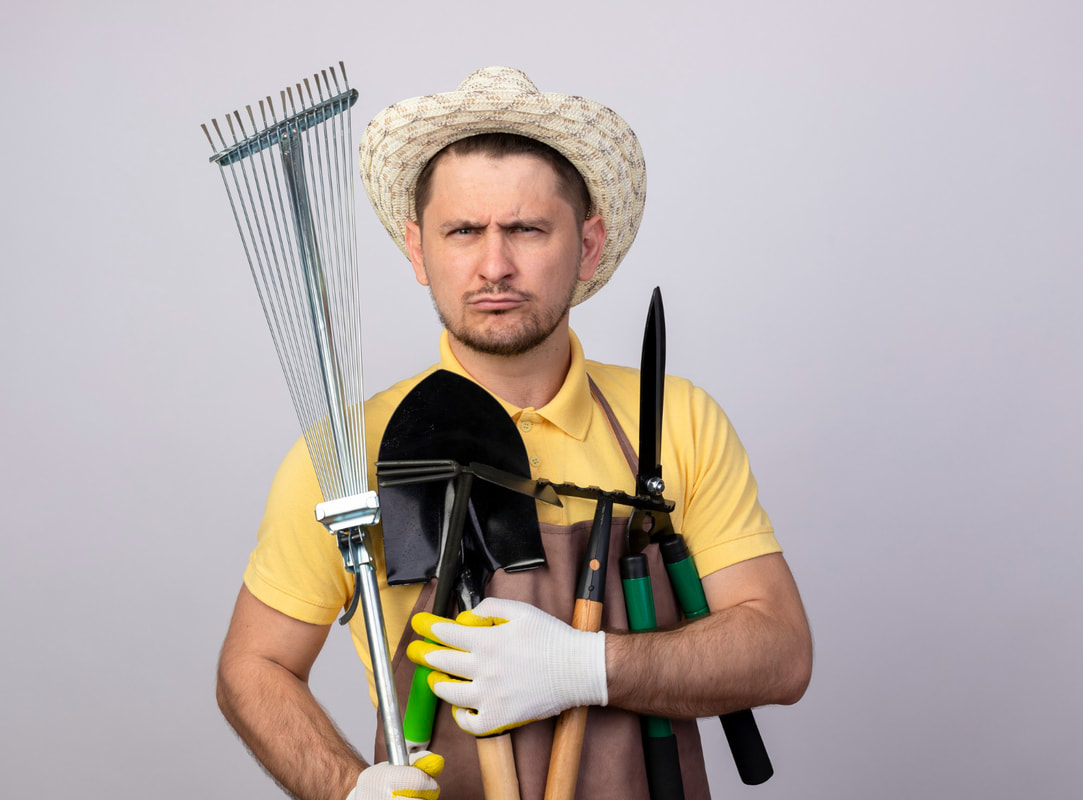
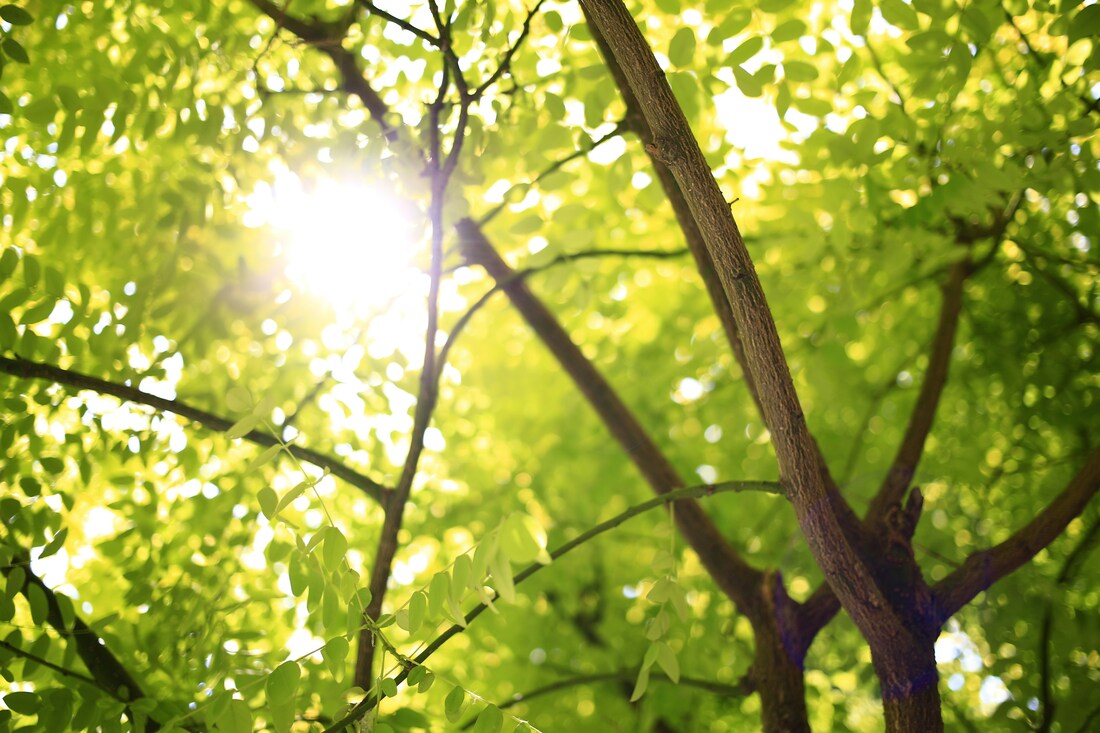
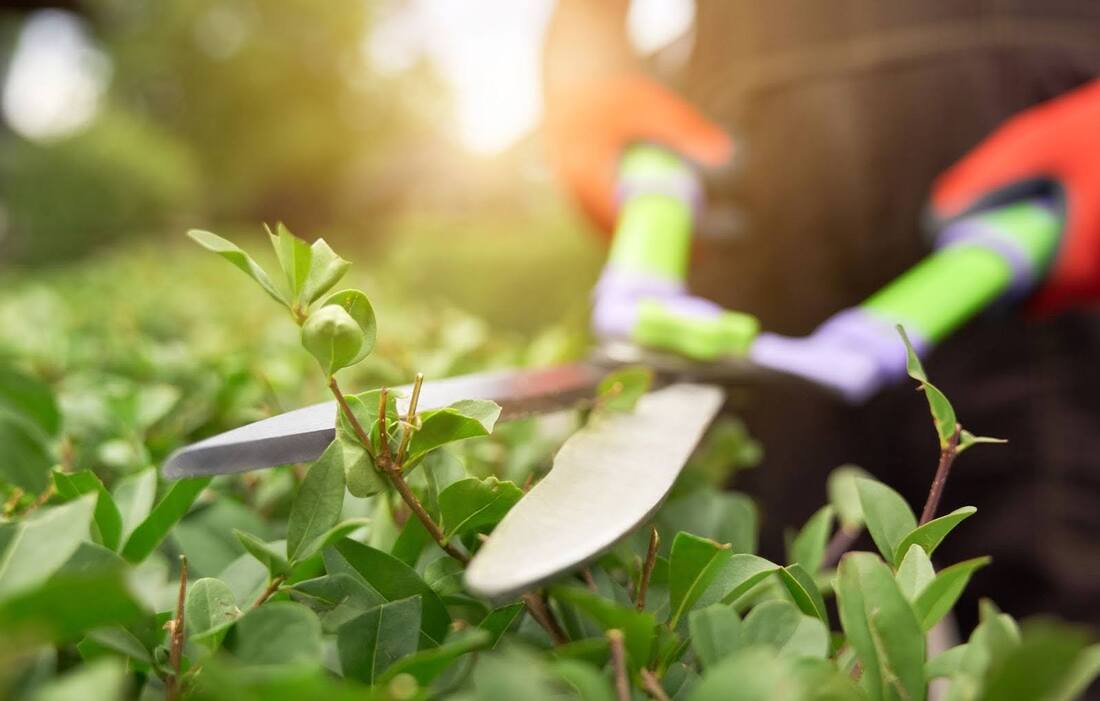
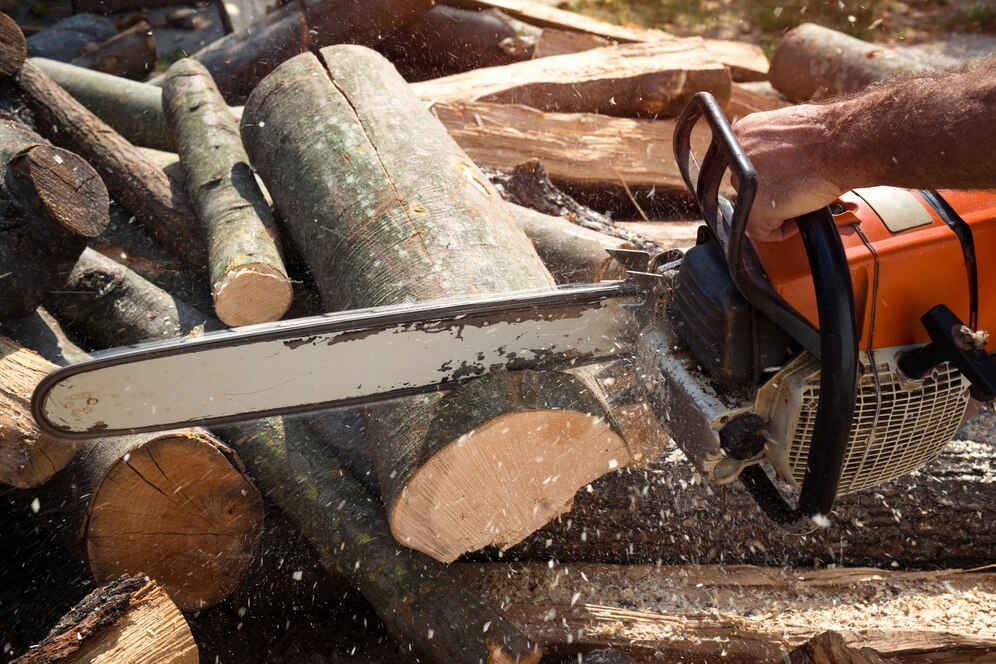
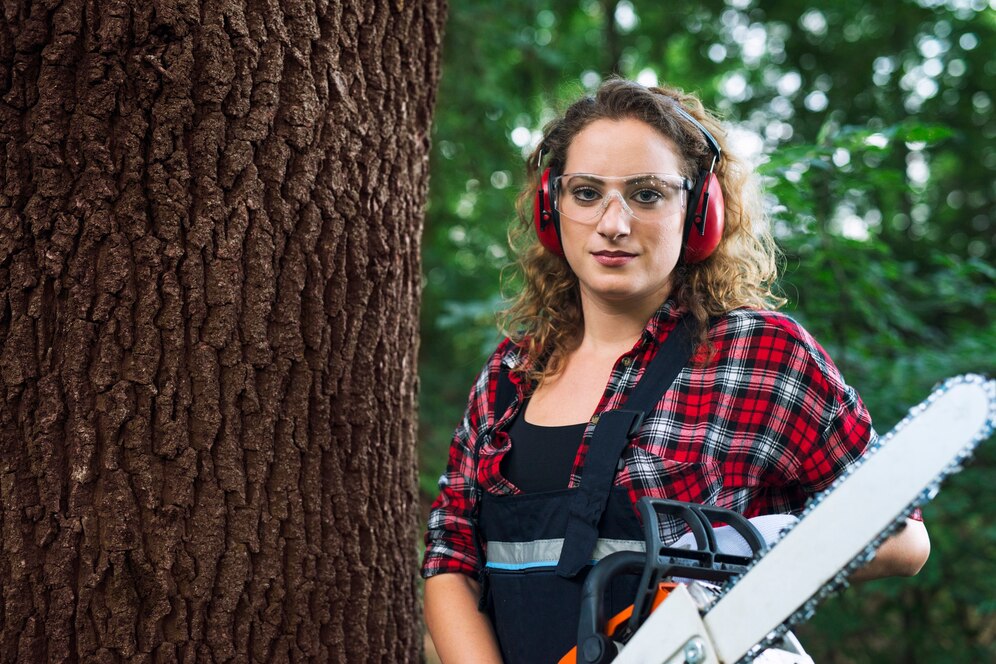
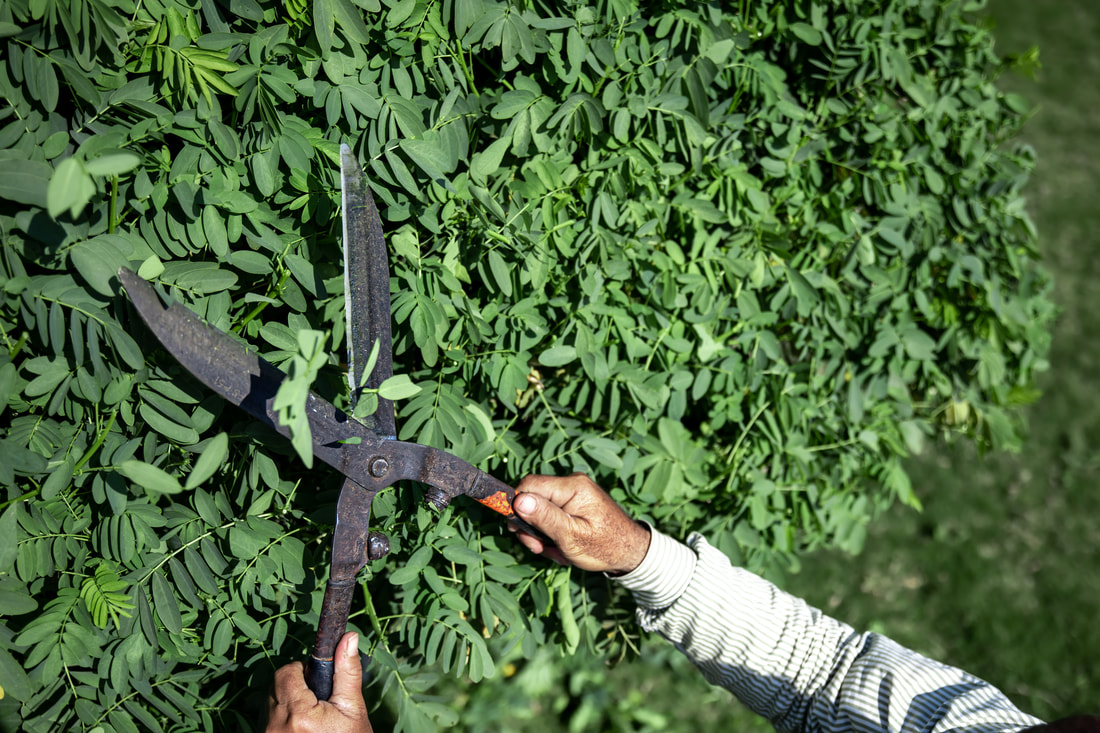
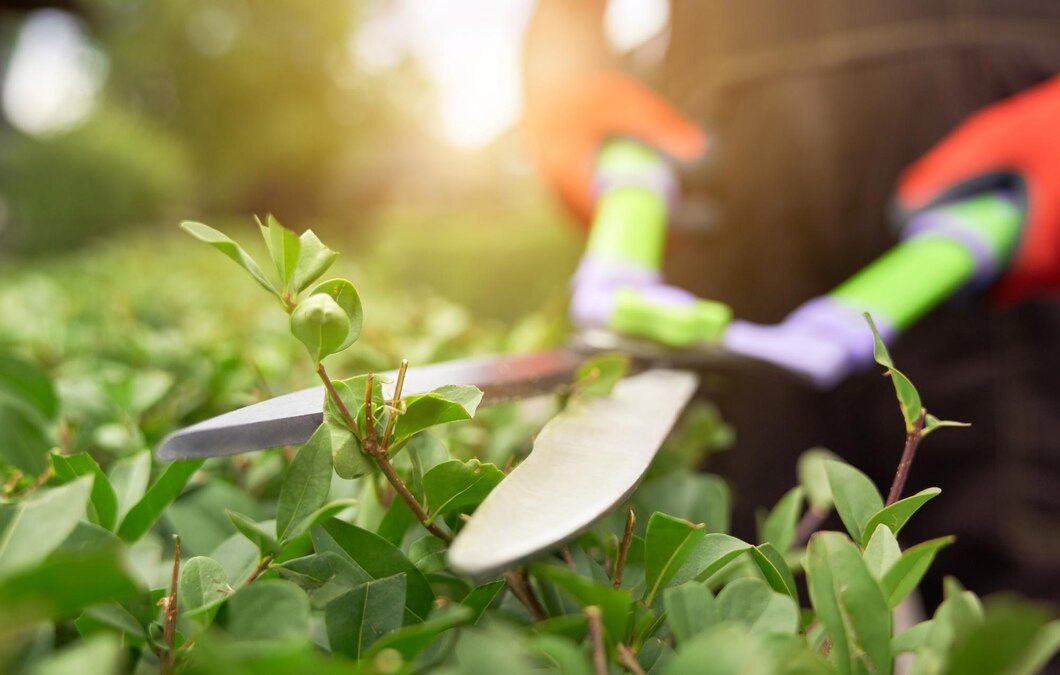
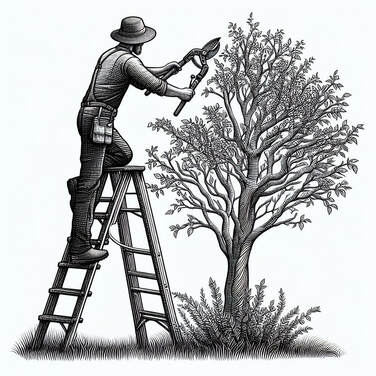




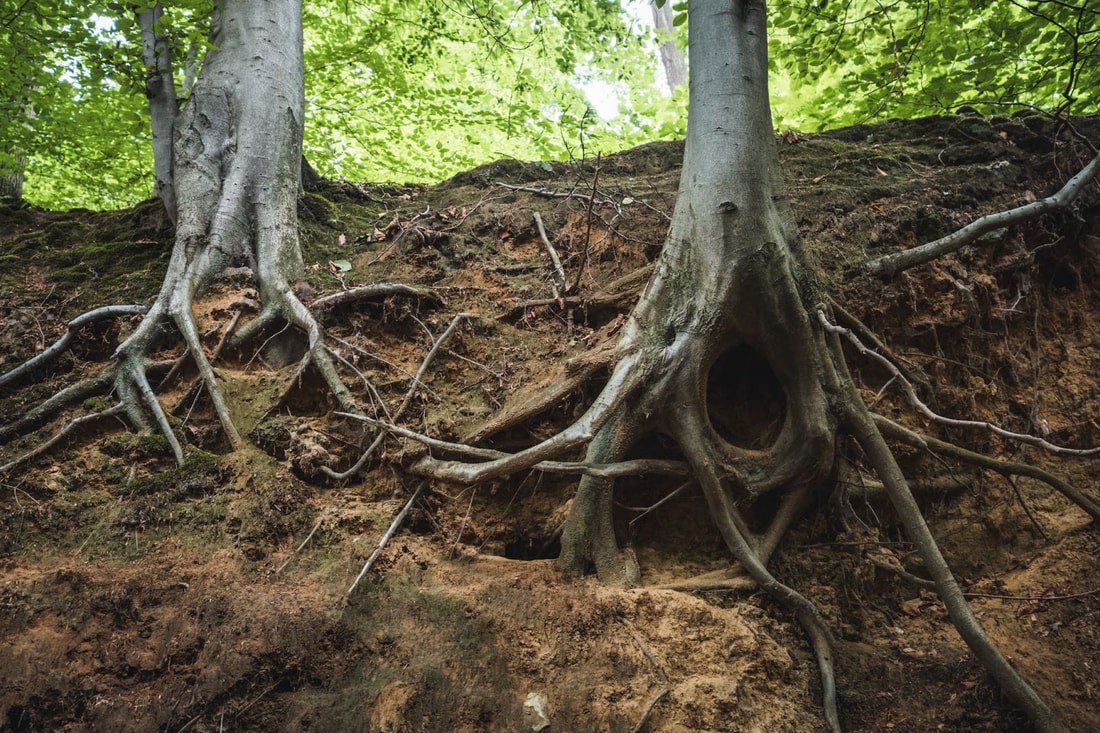
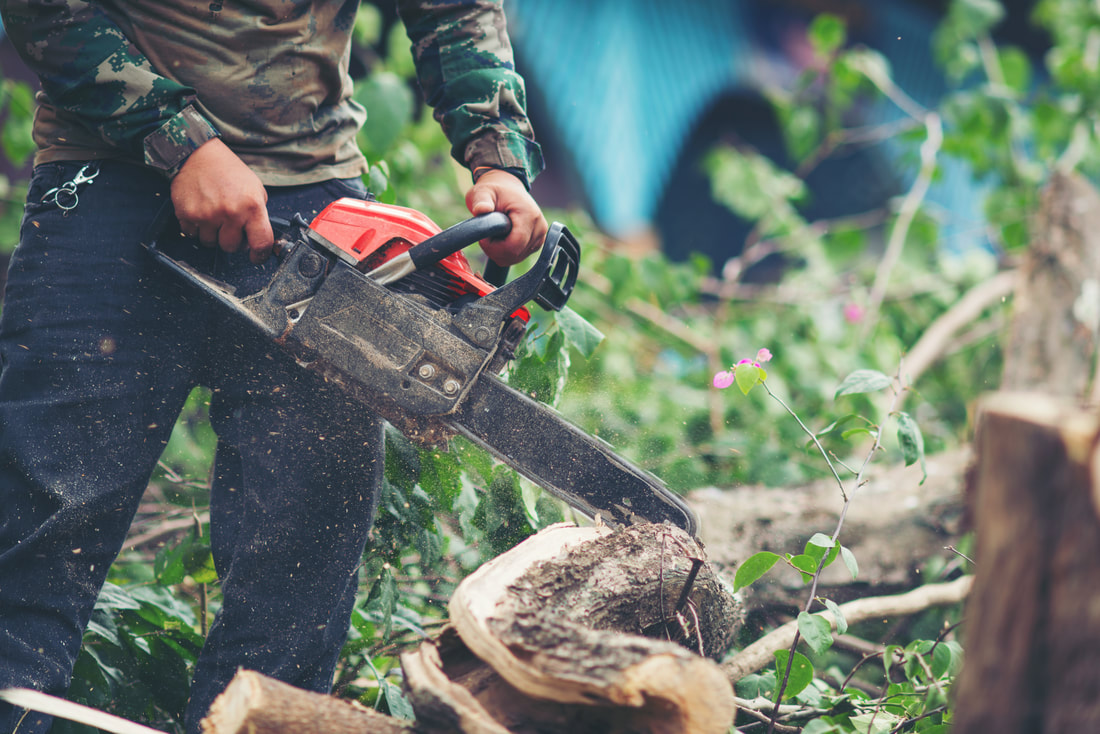
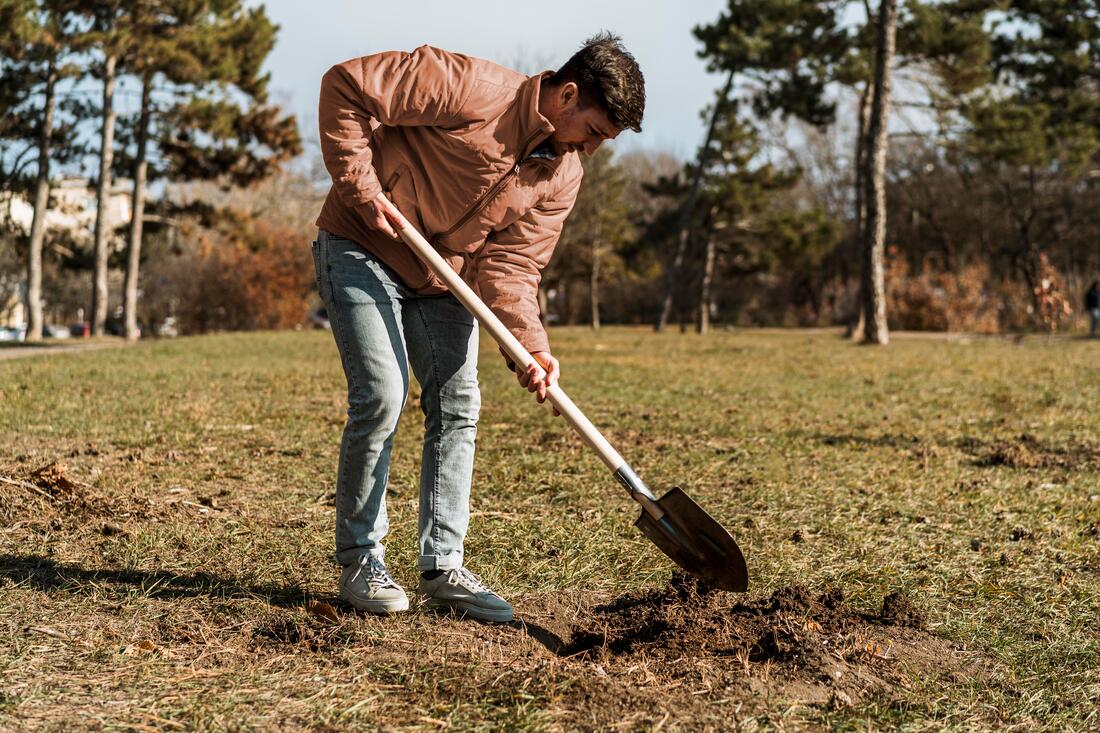
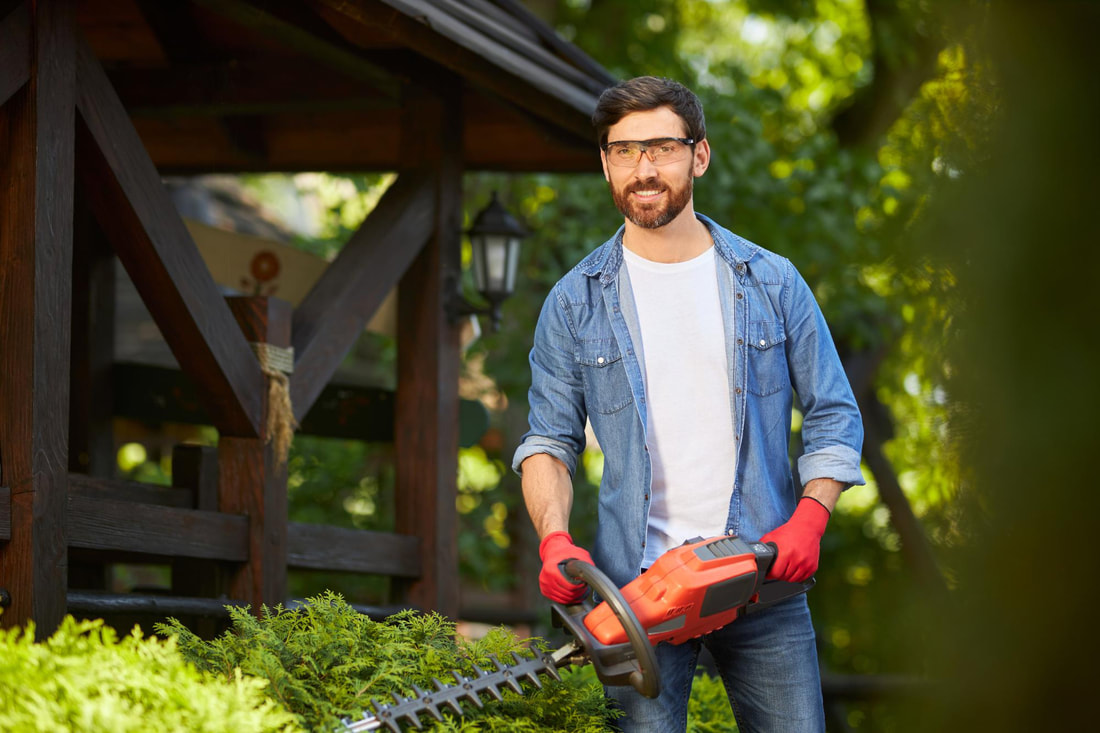
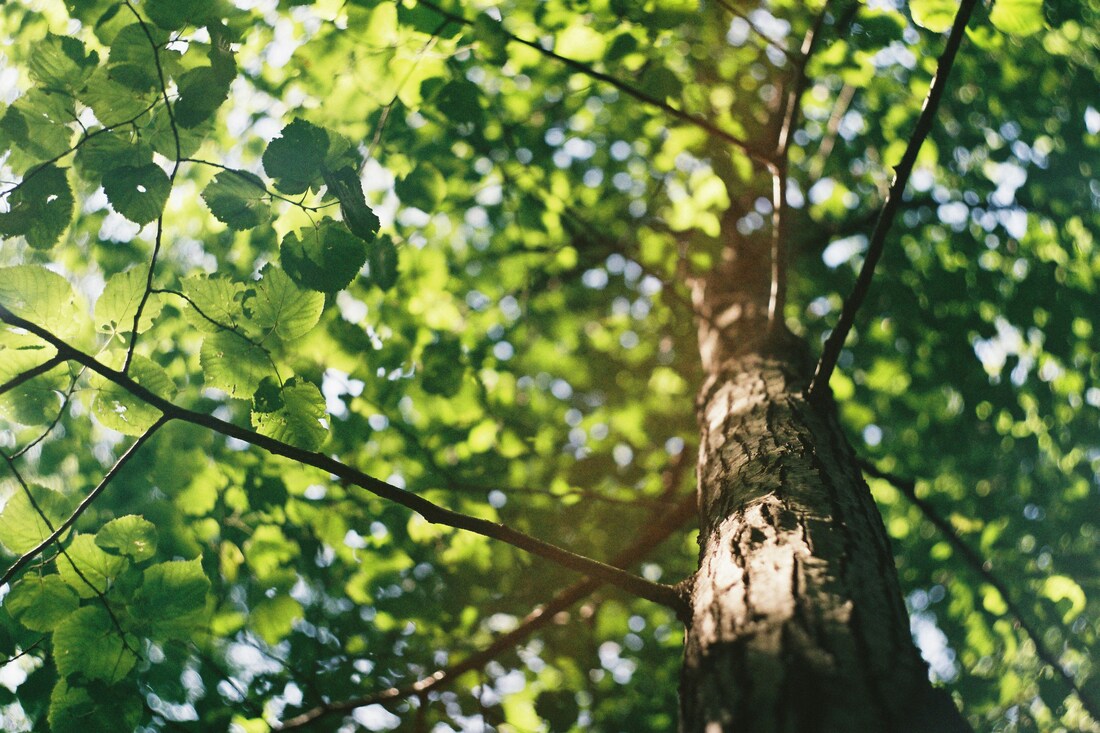
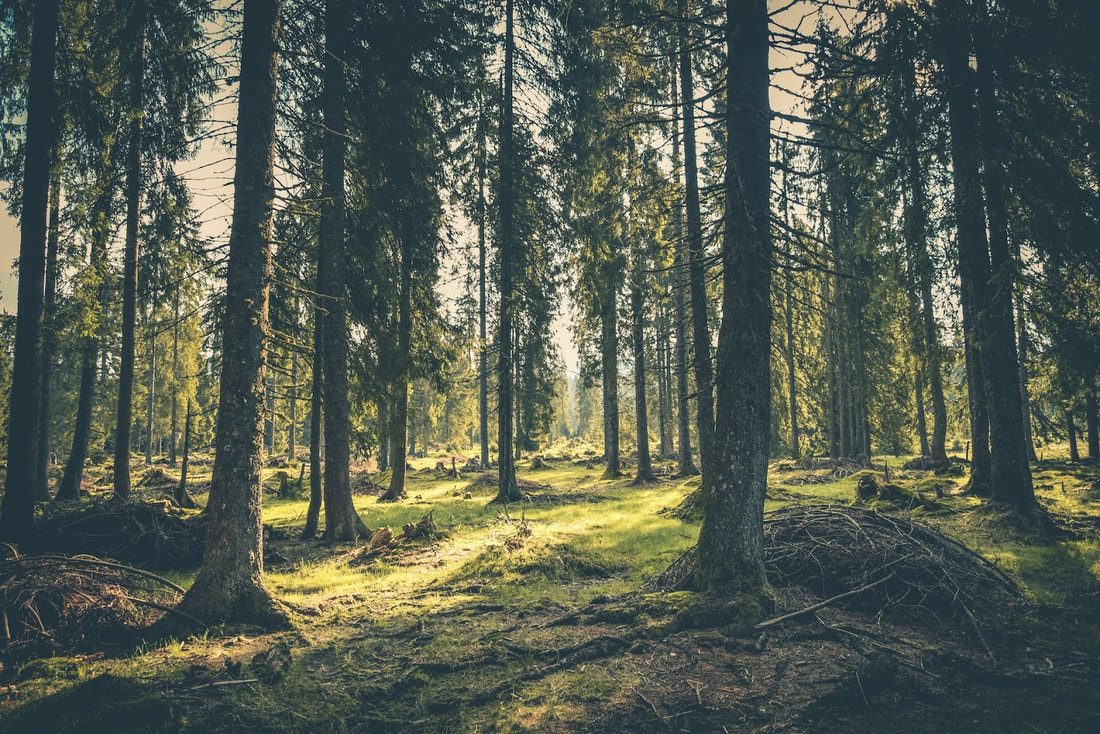
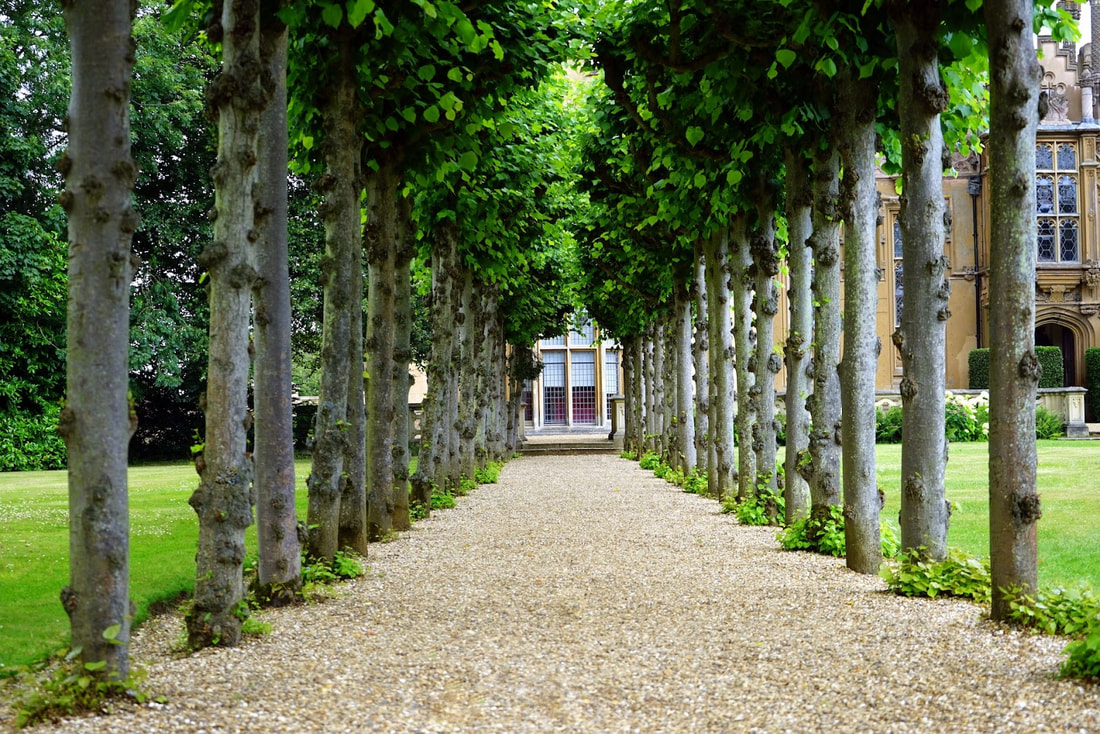

 RSS Feed
RSS Feed